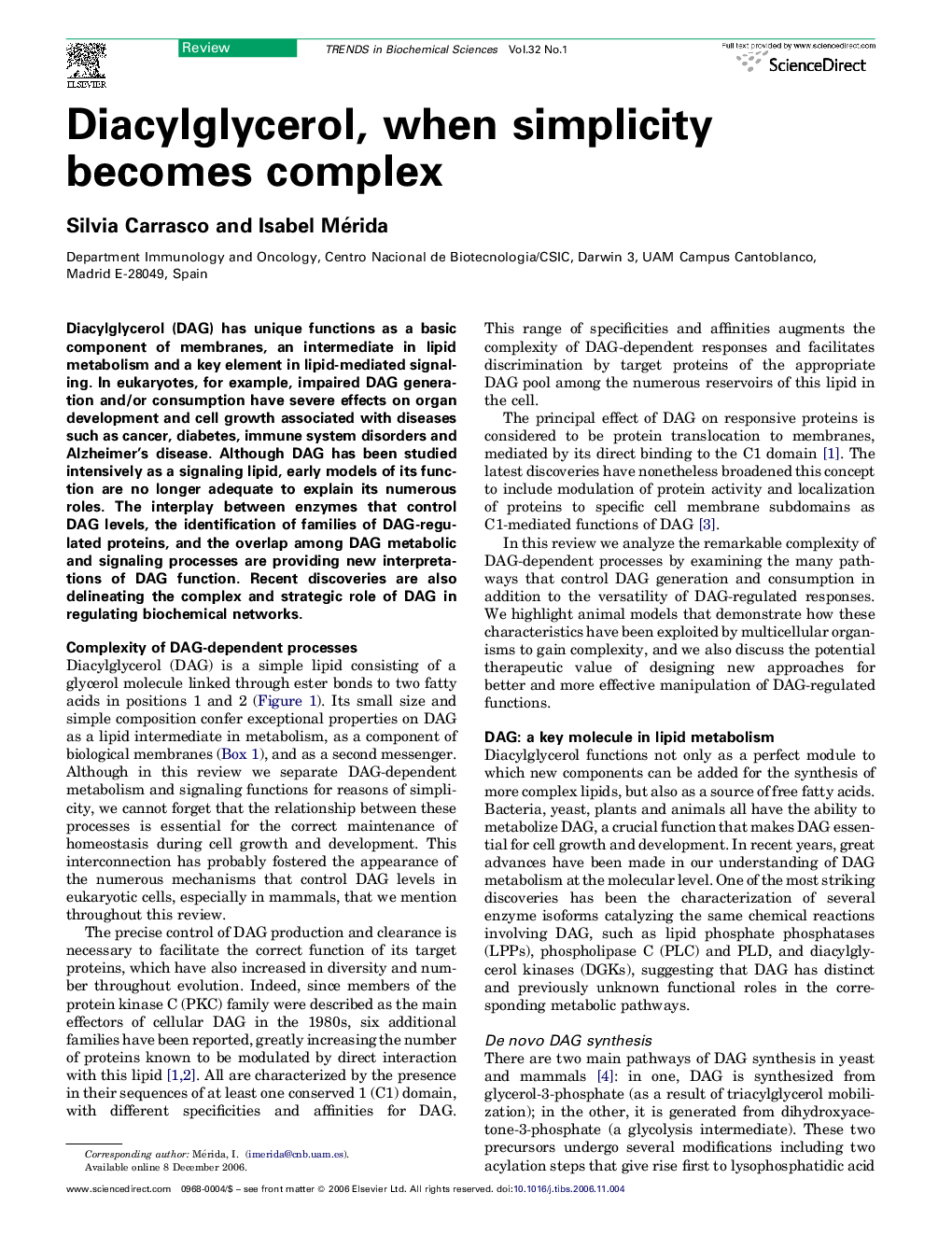| Article ID | Journal | Published Year | Pages | File Type |
|---|---|---|---|---|
| 2031795 | Trends in Biochemical Sciences | 2007 | 10 Pages |
Diacylglycerol (DAG) has unique functions as a basic component of membranes, an intermediate in lipid metabolism and a key element in lipid-mediated signaling. In eukaryotes, for example, impaired DAG generation and/or consumption have severe effects on organ development and cell growth associated with diseases such as cancer, diabetes, immune system disorders and Alzheimer's disease. Although DAG has been studied intensively as a signaling lipid, early models of its function are no longer adequate to explain its numerous roles. The interplay between enzymes that control DAG levels, the identification of families of DAG-regulated proteins, and the overlap among DAG metabolic and signaling processes are providing new interpretations of DAG function. Recent discoveries are also delineating the complex and strategic role of DAG in regulating biochemical networks.
